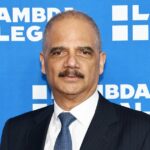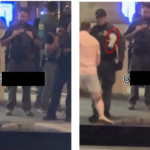As the legal battle over President Donald Trump’s deployment of thousands of National Guard troops and U.S. Marines to Los Angeles this past June drew to a close, the courtroom’s atmosphere was fraught with legal complexities and high stakes. This case, taking place over three crucial days, centered on Governor Gavin Newsom’s fiery lawsuit against the federal deployment which he had not sanctioned.
The thrust of Governor Newsom’s dissent was rooted in the dual deployment of approximately 4,000 California National Guard troops paired with 700 Marines. President Trump justified the deployment as a necessary action to protect federal properties and law enforcement personnel during protests against Immigration and Customs Enforcement (ICE) operations. However, Newsom perceived this move as an overreach of federal powers and responded with a legal action seeking to limit the military’s operational scope particularly against citizen protests.
Representatives from the Department of Justice argued vigorously through lawyer Eric Hamilton to invalidate Newsom’s claim. Central to their argumentation was the assertion that the 1878 Posse Comitatus Act, a law usually preventing armed forces from performing domestic law enforcement duties, did not apply in this instance. They contended further that no legal precedents supported Newsom’s suit for injunctive relief—or for monetary damages—on these grounds, as the State of California had ostensibly not sustained direct harm justifying its standing in the lawsuit.
During the hearings, Meghan Strong, Deputy Attorney General for California, emphasized the unprecedented nature of this federal military use. U.S. District Judge Charles Breyer appeared openly skeptical of many of the federal government’s assertions, puzzled by the administration’s expansive interpretation of the law which seemed to blur the boundaries of military deployment and civilian law enforcement.
In exchanges marked by rising tensions, Breyer critically interrogated the premises of these broad claims of authority. At one point, he vividly expressed his concerns about the “absence of any limits to a national police force.” Echoing constitutional anxieties, he pressed the Justice Department representatives on whether the president’s immunity from criminal prosecution consequently barred any substantial judicial review or institutional checks at this scenario’s scale.
Further complicating the situation was the plaintiff’s request. California sought a judicial order that would still allow troops to safeguard federal establishments —such as courthouses and ICE facilities— yet restrain them from broad immigration enforcement duties which they deemed an “unlawful military crusade.” This point was underpinned by the broader accusations of the California legal team, which deeply criticized the retrospective justification of actions already undertaken under the controversial memorandum issued by the Secretary of Defense. They accused this of revealing a conscious violation of legal boundaries—proof, they argued, of both foresight and malfeasance.
An impactful moment in the trial came when Major General Scott Sherman, a key witness and former commanding general of the Guard task force in Los Angeles, testified that troops were always advised and trained to respect the constraints of the Posse Comitatus Act. This testimony seemingly contradicted earlier federal arguments dismissing the relevance of the Act.
The perspectives of legal scholars such as Josh Kastenberg, a professor at the University of New Mexico Law School, were also sought. Kastenberg commented on the historical fear and constitutional safeguards against a standing army that might oppress civil freedoms—an echo of the bitter experiences of colonial America under British rule—and highlighted the lasting relevance of these considerations in curbing Presidential military directives.
As the trial concluded, the looming decision by Judge Breyer remained highly anticipated. He declined to specify a decision timeline, only remarking, “I will decide the case as soon as I can decide the case.” The implications of this ruling are immense, potentially setting precedents on the limits of federal military use domestically and delineating the interaction between state and federal authority.
This case, underpinned by constitutional debates, federalism concerns, and modern political dynamics, encapsulates a critical junction in American civil-military relations, one with potential ripple effects far beyond the courtroom and deep into the functioning of the United States’ democratic institutions.









